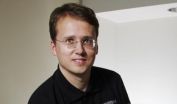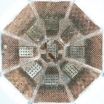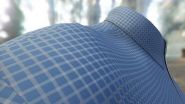(Press-News.org) CHAMPAIGN, Ill. — New research from two University of Illinois economics professors who study election trends analyzes how polarization on social issues affects competing candidates' economic platforms.
In the paper, co-authors Stefan Krasa and Mattias Polborn develop a theory of candidate competition that accounts for the influence of both economic and cultural issues on individual voting behavior.
"Many pundits and academics have argued that political polarization, particularly on social and cultural issues, has increased in the U.S.," said Polborn, also a professor of political science at Illinois. "With this paper, we analyze how that polarization influences the political jockeying between candidates on economic and cultural issues."
The researchers test their theory using what they term a "differentiated candidates framework" in which two office-motivated candidates differ in their ideological position and choose a level of government spending and implied taxes to maximize their vote share.
"In competition models, the candidates compete for moderate voters in the middle that they both want to win over because, typically, whoever wins the most swing voters also wins the election," Krasa said.
Vote-maximizing politicians have a clear incentive to cater to the interests of these "swing voters" – that is, voters who are virtually indifferent between the rival candidates – rather than the electorate in general, the authors say.
"Competing is really simple according to the standard 'median voter theorem' – candidates should propose the policy preferred by the voter with the median economic preferences," Polborn said. "But in reality, voters care about both the cultural and economic positions of competing candidates, and modeling this and the interaction between cultural polarization and economic policies is the main innovation of our model."
In most previous studies, it was assumed that voters were one-dimensional blocs of liberals, moderates and conservatives. But in their analysis, Krasa and Polborn found that candidates are really competing not just for one type of swing voter, but rather for many different types.
"A swing voter might be someone who is socially conservative and economically liberal, or vice versa," Polborn said. "Social conservatives who happen to be sufficiently keen on government spending may vote for the Democrat, and social liberals who are sufficiently opposed to high taxation may vote for the Republican. Or you could be moderate for one or both of the issues."
In the paper, Krasa and Polborn also analyze changes in the parties' cultural positions as well as in the distribution of cultural preferences that affect the candidates' equilibrium economic policies.
They show that if the Democratic position on social issues becomes more extreme, then both Republicans and Democrats will adopt a more liberal economic policy. In contrast, if the voters' average preferences for these social issues become more liberal, then both parties become more economically conservative.
Candidates will always fight tooth-and-nail to win over swing voters, but with a continuum of swing voters with different cultural and economic preferences, rather than a single, monolithic swing voter bloc, crafting a policy that appeals to them economically is a lot less straightforward, Krasa said.
"For example, a candidate who proposes a more expansive economic policy gains votes among economically liberal swing voters, but loses some economically conservative swing voters," he said.
INFORMATION:The paper was published in the journal American Economic Review.
Swing voters hold more sway over candidates on economic issues
2014-03-20
ELSE PRESS RELEASES FROM THIS DATE:
UTMB researchers discover a way to potentially slow down Alzheimer's
2014-03-20
Researchers at the University of Texas Medical Branch at Galveston have discovered a way to potentially halt the progression of dementia caused by accumulation of a protein known as tau.
Normally, tau protein is involved in microtubule formation, which acts as a brain cell's transportation system for carrying nutrients in and waste out. In the absence of tau protein, brain cells become dysfunctional and eventually die.
In many forms of dementia, such as Alzheimer's disease and chronic traumatic encephalopathy caused by multiple concussions, the tau protein starts behaving ...
What singing fruit flies can tell us about quick decisions
2014-03-20
You wouldn't hear the mating song of the male fruit fly as you reached for the infested bananas in your kitchen. Yet, the neural activity behind the insect's amorous call could help scientists understand how you made the quick decision to pull your hand back from the tiny swarm.
Male fruit flies base the pitch and tempo of their mating song on the movement and behavior of their desired female, Princeton University researchers have discovered. In the animal kingdom, lusty warblers such as birds typically have a mating song with a stereotyped pattern. A fruit fly's song, ...
As age-friendly technologies emerge, experts recommend policy changes
2014-03-20
From smart phones to smart cars, both public and private entities must consider the needs of older adults in order to help them optimize the use of new technologies, according to the latest issue of Public Policy & Aging Report (PP&AR), titled "Aging and Technology: The Promise and the Paradox." A total of eight articles all from authors affiliated with the Massachusetts Institute of Technology AgeLab are featured.
"Remarkable technological advances are all around us, and leaders in the business and scientific communities are keenly aware of 'the aging of America' and ...
A braking system for immune responses
2014-03-20
The surface of immune system cells is home to a number of receptors which are able to detect pathogens. As soon as these receptors are activated, inflammation occurs and the body's defense mechanisms kick in. Immune cells also have receptors that regulate or even suppress immunological responses to prevent damage to individual cells.
There are other immune receptors that recognize endogenous substances that are released when tissue damage or cell death occurs. As such, the organism can defend itself even in cases where the damage caused by the pathogen, but not the pathogen ...
(Not too) few but capable
2014-03-20
Until the '50s, bluefin tuna fishing was a thriving industry in Norway, second only to sardine fishing. Every year, bluefin tuna used to migrate from the eastern Mediterranean up to the Norwegian coasts. Suddenly, however, over no more than 4-5 years, the tuna never went back to Norway. In an attempt to solve this problem, Giancarlo De Luca from SISSA (the International School for Advanced Studies of Trieste) together with an international team of researchers (from the Centre for Theoretical Physics - ICTP – of Trieste and the Technical University of Denmark) started to ...
Inhibition of CDK4 might promote lymphoma development and progression
2014-03-20
COLUMBUS, Ohio – Anticancer agents that inhibit tumor growth by targeting a regulatory protein called CDK4 might actually promote the development and progression of certain B-cell lymphomas, according to a new study led by researchers at The Ohio State University Comprehensive Cancer Center – Arthur G. James Cancer Hospital and Richard J. Solove Research Institute (OSUCCC – James).
The study indicates that inhibiting CDK4, a regulator of the cell cycle, promotes genetic instability and the development or progression of B-cell lymphomas that are driven by the MYC oncogene.
The ...
Thoughtful people more likely to infer improvements in race relations
2014-03-20
According to a recent Pew Research poll, a majority of Americans believe that there is still at least some racism against African Americans in this country. But new research by Jane L. Risen of the University of Chicago Booth School of Business shows that people are more likely to deny the persistence of racism after being exposed to a successful African American. Notably, people who are most thoughtful seem to be the ones who are most vulnerable to making these quick inferences.
In "If He Can Do It, So Can They: Exposure to Counterstereotypically Successful Exemplars ...
Linking storms to climate change a 'distraction', say experts
2014-03-20
Connecting extreme weather to climate change distracts from the need to protect society from high-impact weather events which will continue to happen irrespective of human-induced climate change, say experts.
Writing in the journal Weather, Climate and Society, the University of Manchester researchers argue that cutting greenhouse gas emissions, while crucial to reducing humanity's longer-term impact on the planet, will not eliminate violent storms, tornadoes or flooding and the damage they cause.
The authors suggest that developing greater resilience to extreme weather ...
Prêt-à-fabriquer: Real-time simulation of textiles
2014-03-20
It is very costly to present textiles interactively on a computer screen. Until recently, this process often took several days to weeks. Using recently engineered simulation software, now this process takes just seconds. Designers, pattern makers and tailors can create their clothes in real time. Just as they do in reality. Besides needle and thread, the computer mouse is increasingly turning into one of their most indispensable tools. A few clicks suffice to make just the right adjustments to color, material and cut pattern. Shadowing, optical and mechanical qualities ...
Eyes are windows to the soul -- and evolution
2014-03-20
ITHACA, N.Y. – Why do we become saucer-eyed from fear and squint from disgust?
These near-opposite facial expressions are rooted in emotional responses that exploit how our eyes gather and focus light to detect an unknown threat, according to a study by a Cornell University neuroscientist.
Media note: Images, video and research paper available at: https://cornell.box.com/EyeEvolution
Our eyes widen in fear, boosting sensitivity and expanding our field of vision to locate surrounding danger. When repulsed, our eyes narrow, blocking light to sharpen focus and pinpoint ...



